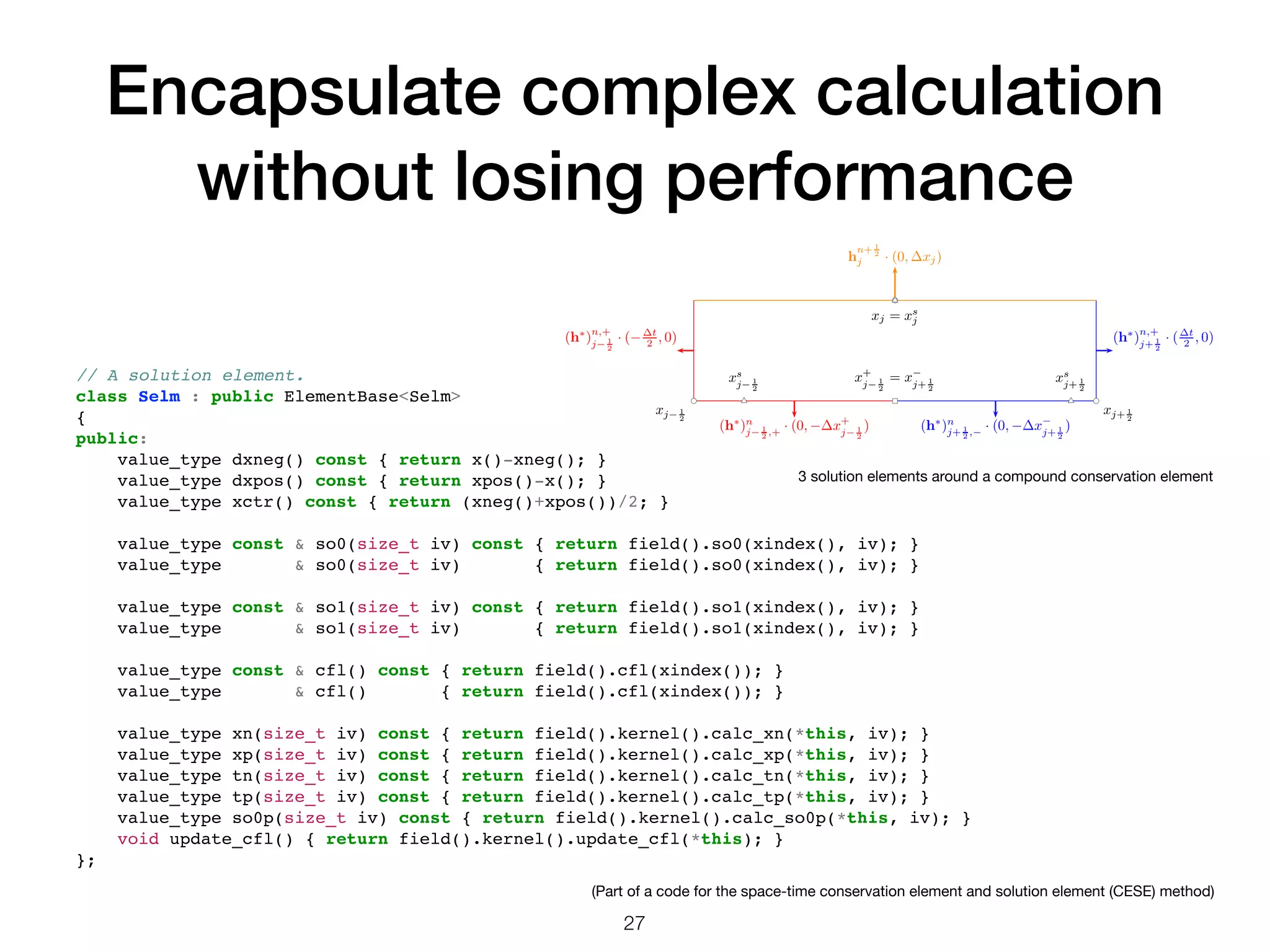The document discusses moving from Python to C++. It notes that Python is commonly used for application development due to its ease of use, while C++ is used for high-performance computing kernels due to better performance. It recommends binding Python and C++ together, using C++ for performance critical parts and Python for user interfaces and scripting. Pybind11 is identified as a good tool for binding Python and C++ that provides modern C++ features and is easy to use.



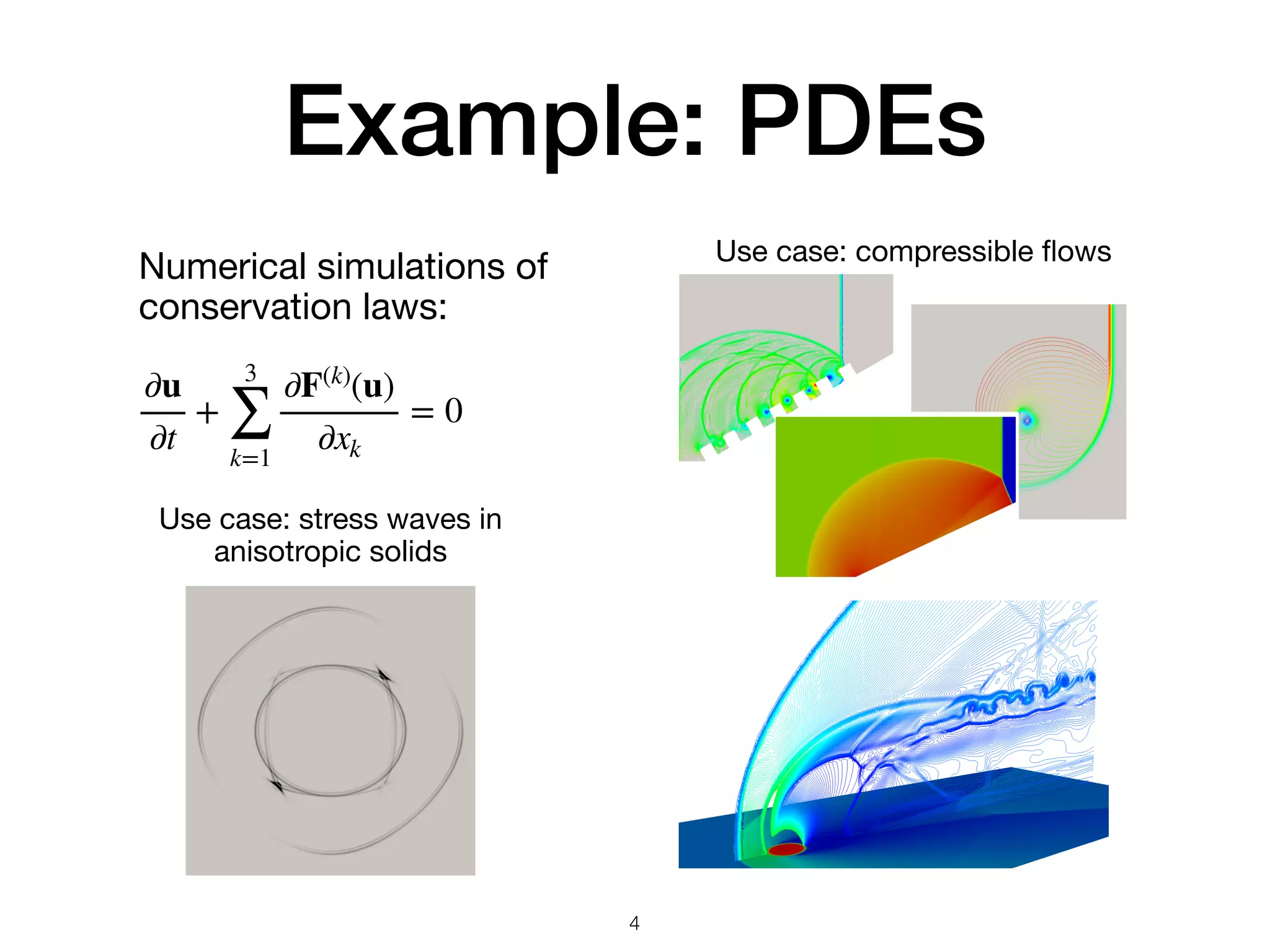
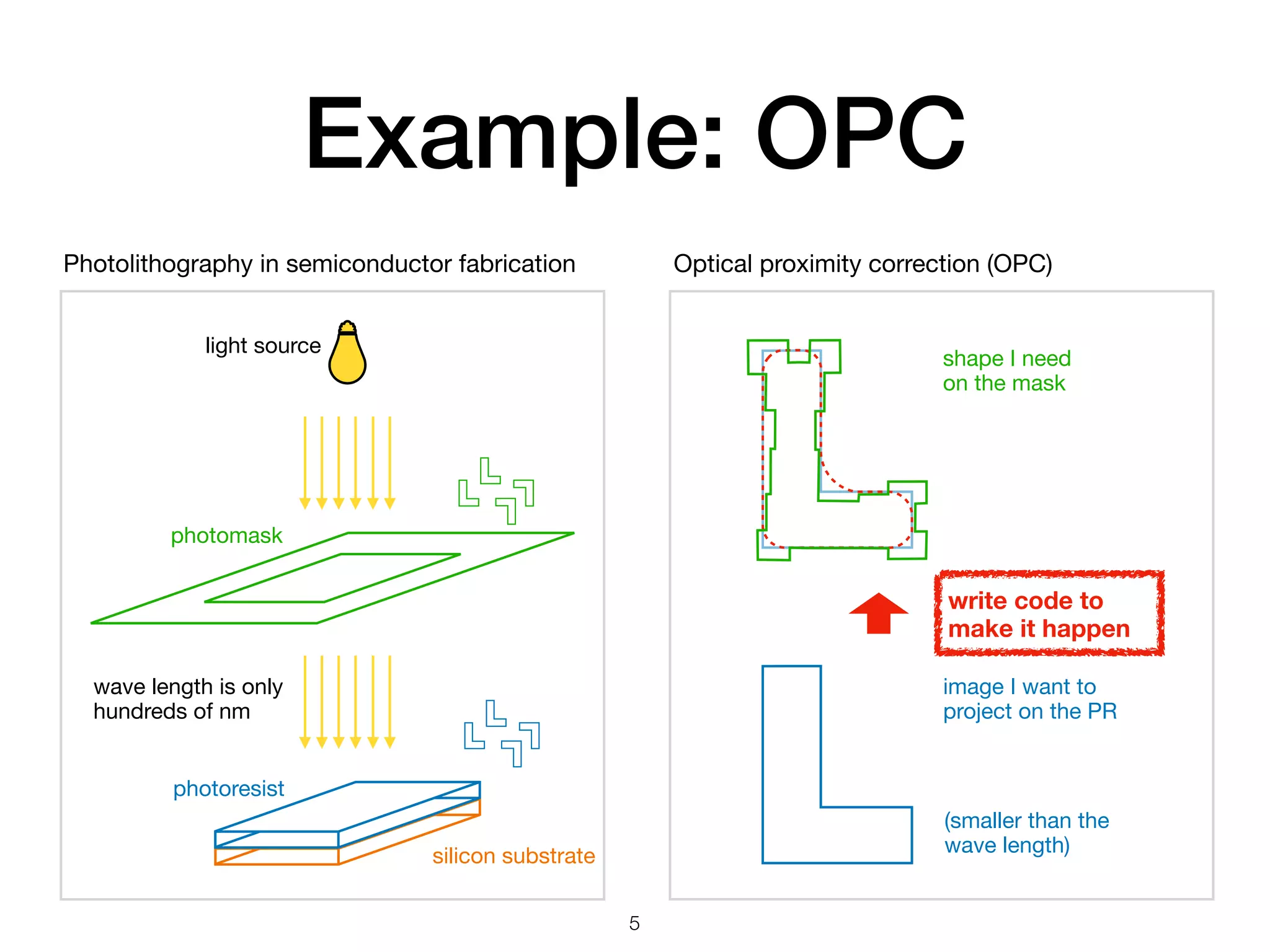
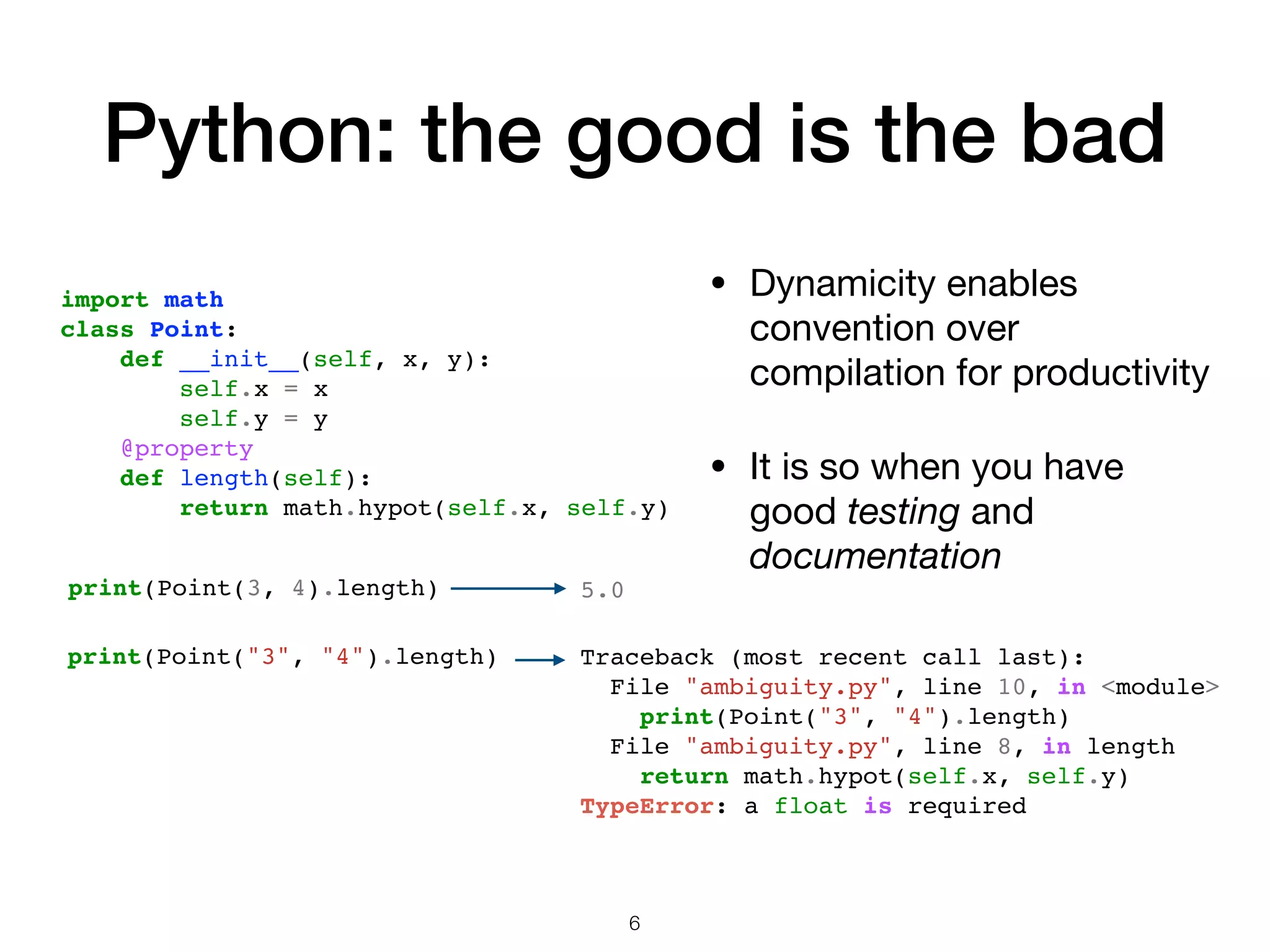
![What is fast? worker(Data&, unsigned long, int): mov DWORD PTR [rdi+rsi*4], edx mov rax, rdi ret class Data { int m_storage[1024]; public: int & operator[] (size_t it) { return m_storage[it]; } }; Data & worker(Data & data, size_t idx, int value) { data[idx] = value; return data; } High-level language Machine code 7](https://image.slidesharecdn.com/notesaboutmovingfrompythontocpycontw2020-200906022140/75/Notes-about-moving-from-python-to-c-py-contw-2020-7-2048.jpg)
![Dynamic typing is slow • Python trades runtime for convenience; everything is indirect and incurs runtime overhead def work(data, key, name, value): # Assign value to the data as a container with key. data[key] = value # Assign value to the data as an object with name. setattr(data, name, value) return data 8 • The innocent-looking Python code uses many checking functions under the hood](https://image.slidesharecdn.com/notesaboutmovingfrompythontocpycontw2020-200906022140/75/Notes-about-moving-from-python-to-c-py-contw-2020-8-2048.jpg)
![int PyObject_SetItem(PyObject *o, PyObject *key, PyObject *value) { PyMappingMethods *m; if (o == NULL || key == NULL || value == NULL) { null_error(); return -1; } m = o->ob_type->tp_as_mapping; if (m && m->mp_ass_subscript) return m->mp_ass_subscript(o, key, value); if (o->ob_type->tp_as_sequence) { if (PyIndex_Check(key)) { Py_ssize_t key_value; key_value = PyNumber_AsSsize_t(key, PyExc_IndexError); if (key_value == -1 && PyErr_Occurred()) return -1; return PySequence_SetItem(o, key_value, value); } else if (o->ob_type->tp_as_sequence->sq_ass_item) { type_error(/* ... omit ... */); return -1; } } type_error(/* ... omit ... */); return -1; } int PyObject_SetAttr(PyObject *v, PyObject *name, PyObject *value) { PyTypeObject *tp = Py_TYPE(v); int err; if (!PyUnicode_Check(name)) { PyErr_Format(PyExc_TypeError, /* ... omit ... */); return -1; } Py_INCREF(name); PyUnicode_InternInPlace(&name); if (tp->tp_setattro != NULL) { err = (*tp->tp_setattro)(v, name, value); Py_DECREF(name); return err; } if (tp->tp_setattr != NULL) { const char *name_str = PyUnicode_AsUTF8(name); if (name_str == NULL) { Py_DECREF(name); return -1; } err = (*tp->tp_setattr)(v, (char *)name_str, value); Py_DECREF(name); return err; } Py_DECREF(name); _PyObject_ASSERT(name, name->ob_refcnt >= 1); if (tp->tp_getattr == NULL && tp->tp_getattro == NULL) PyErr_Format(PyExc_TypeError, /* ... omit ... */); else PyErr_Format(PyExc_TypeError, /* ... omit ... */); return -1; } data[key] = value setattr(data, name, value) (in Objects/abstract.c) (in Objects/object.c) static PyObject *__pyx_pf_6simple_work( PyObject *__pyx_v_data, PyObject *__pyx_v_key , PyObject *__pyx_v_name, PyObject *__pyx_v_value ) { PyObject_SetItem(__pyx_v_data, __pyx_v_key, __pyx_v_value); PyObject_SetAttr(__pyx_v_data, __pyx_v_name, __pyx_v_value); return __pyx_v_data; } def work(data, key, name, value): data[key] = value setattr(data, name, value) return data mapping sequence attribute name check check to set 9](https://image.slidesharecdn.com/notesaboutmovingfrompythontocpycontw2020-200906022140/75/Notes-about-moving-from-python-to-c-py-contw-2020-9-2048.jpg)
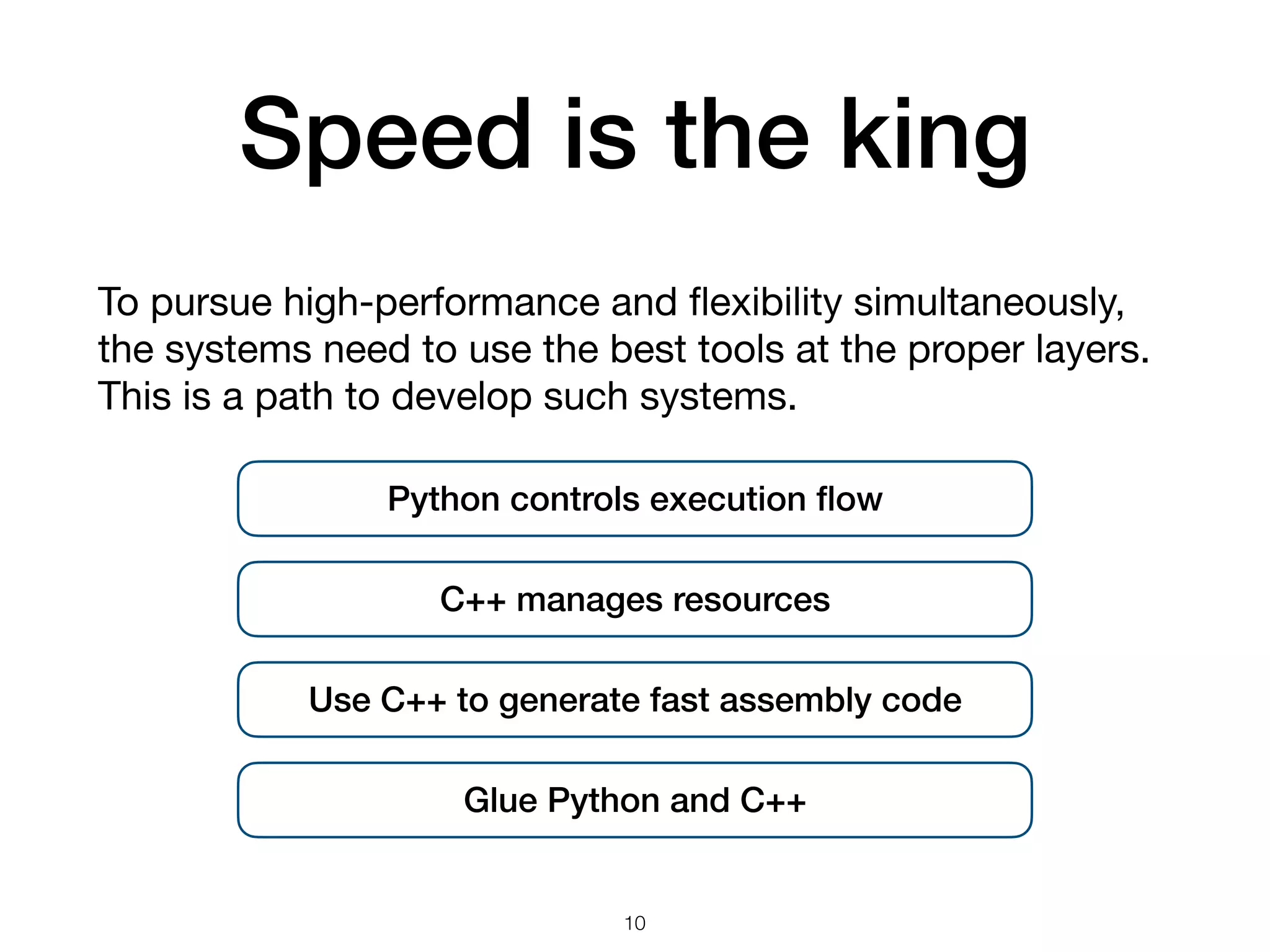
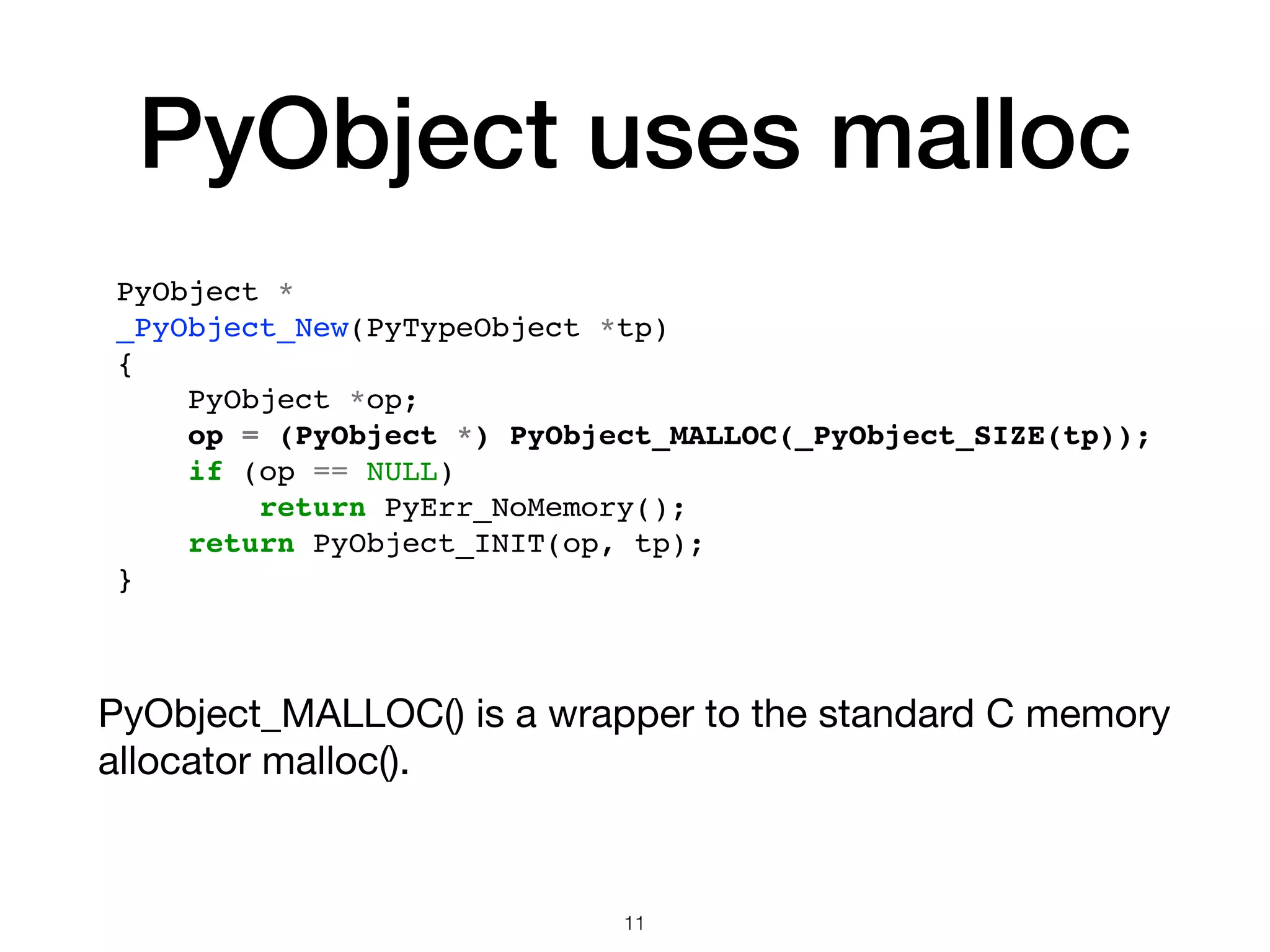
![Python call stack • Python maintains its own stack • It’s different from that of the ‘real machine’ • The two (C/C++ and Python) call stacks work very differently 12 #0 line 11: show_stack #1 line 23: caller #2 line 25: <module>: top-level module local_val is: defined outside import inspect def show_stack(): # Print calling stacks. f = inspect.currentframe() i = 0 while f: name = f.f_code.co_name if '<module>' == name: name += ': top-level module' print("#%d line %d: %s" % (i, f.f_lineno, name)) f = f.f_back i += 1 # Obtain a local variable defined in an outside stack. f = inspect.currentframe().f_back print('local_val is:', f.f_locals['local_var']) del f def caller(): local_var = "defined outside" show_stack() caller()](https://image.slidesharecdn.com/notesaboutmovingfrompythontocpycontw2020-200906022140/75/Notes-about-moving-from-python-to-c-py-contw-2020-12-2048.jpg)
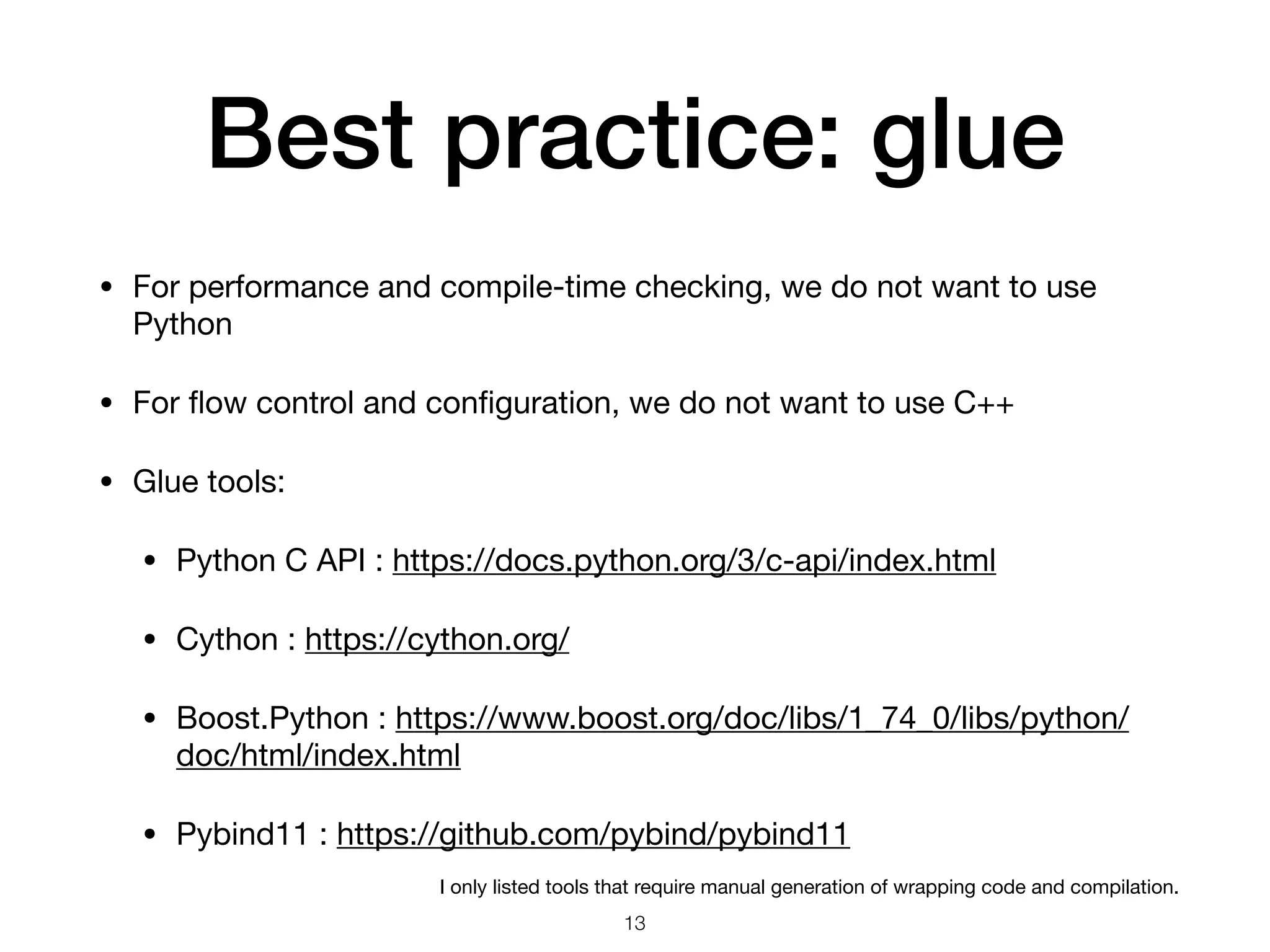
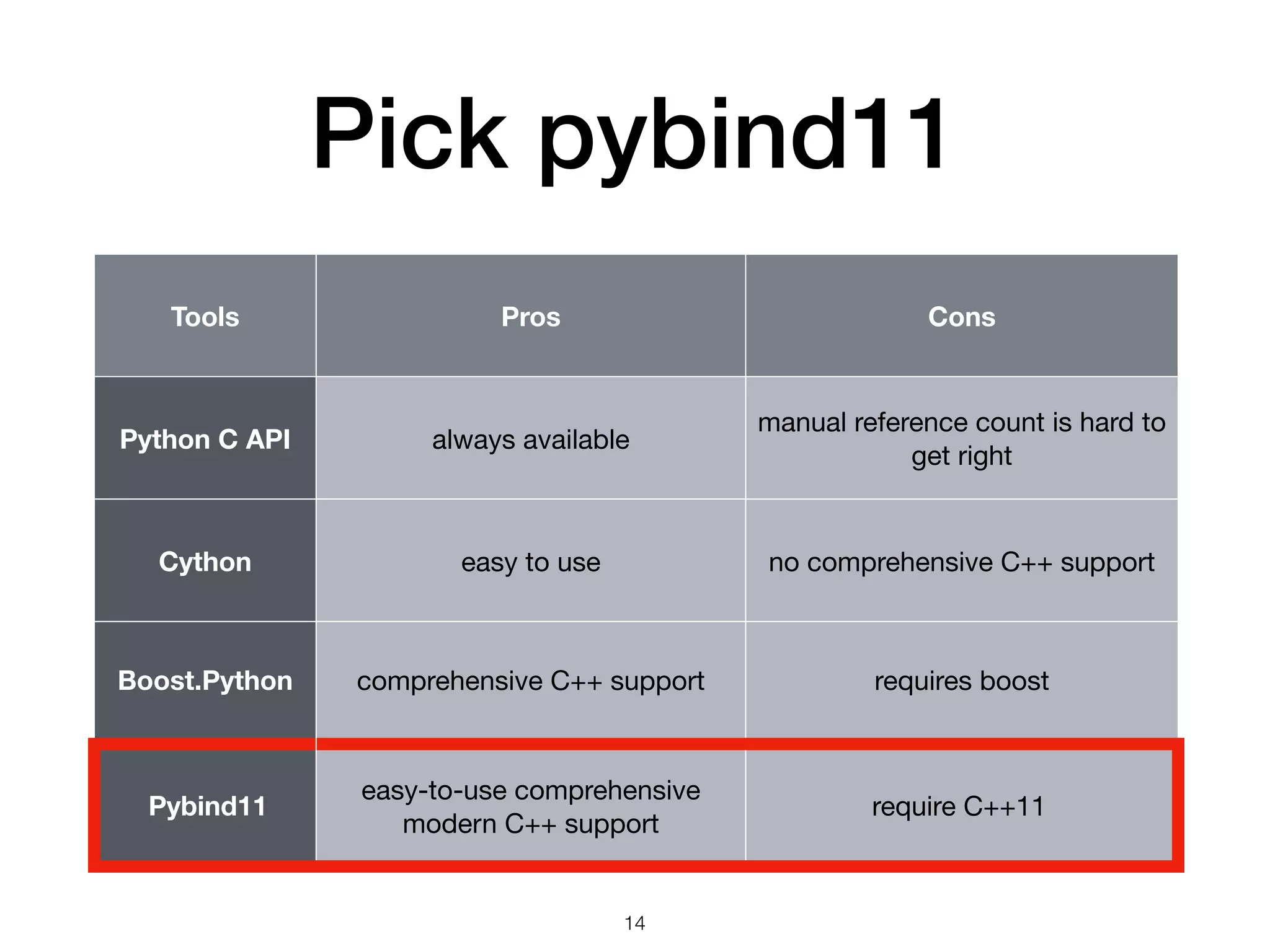
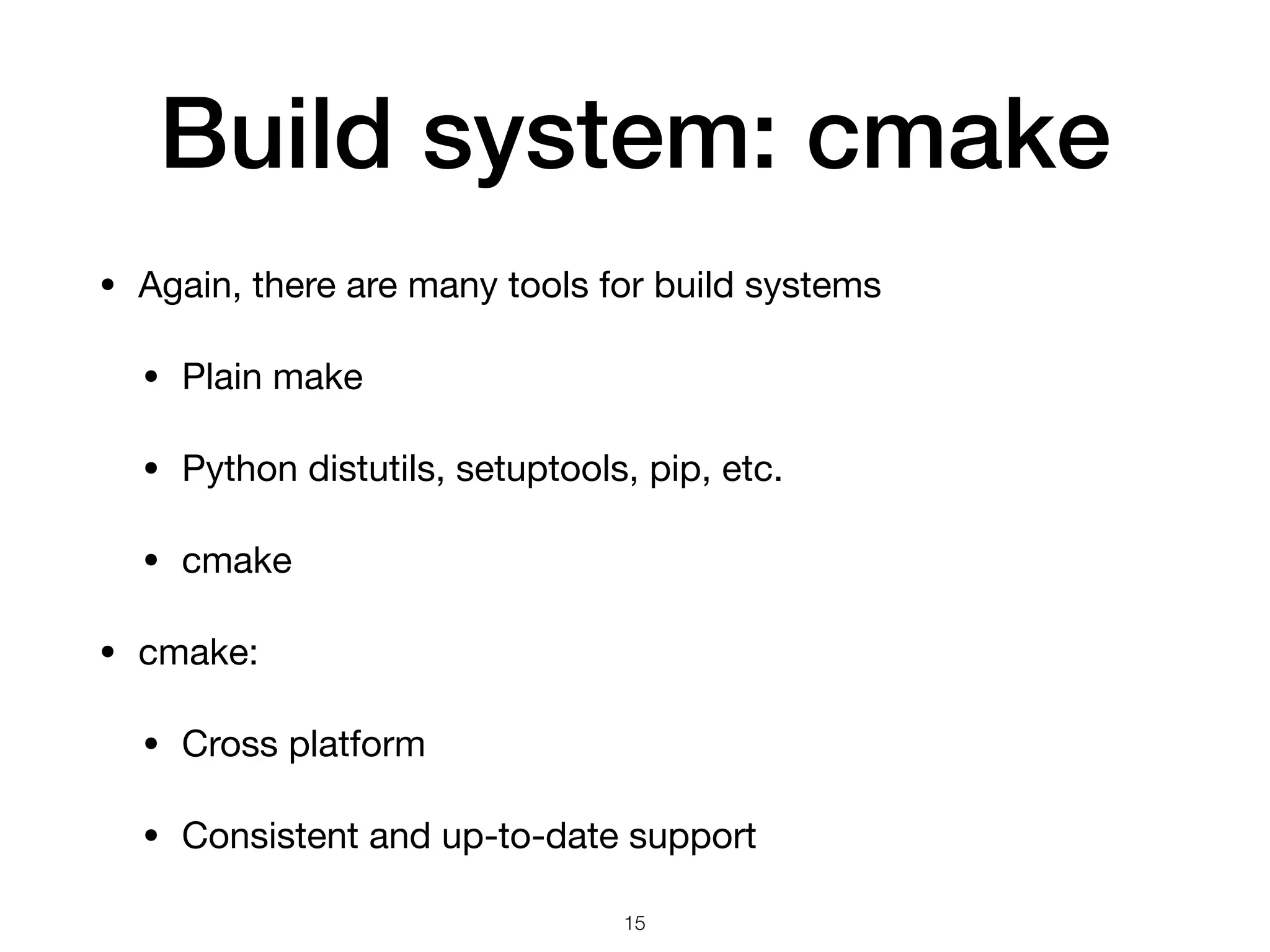
![How cmake works 16 #include <pybind11/pybind11.h> #include <pybind11/stl.h> #include <cmath> std::vector<double> distance( std::vector<double> const & x , std::vector<double> const & y) { std::vector<double> r(x.size()); for (size_t i = 0 ; i < x.size() ; ++i) { r[i] = std::hypot(x.at(i), y.at(i)); } return r; } PYBIND11_MODULE(_pybmod, mod) { namespace py = pybind11; mod.doc() = "simple pybind11 module"; mod.def("distance", &distance); } cmake_minimum_required(VERSION 3.9) project(pybmod) find_package(pybind11 REQUIRED) include_directories(${pybind11_INCLUDE_DIRS}) pybind11_add_module( _pybmod pybmod.cpp ) target_link_libraries(_pybmod PRIVATE ${MKL_LINKLINE}) set_target_properties(_pybmod PROPERTIES CXX_VISIBILITY_PRESET "default") add_custom_target(_pybmod_py COMMAND ${CMAKE_COMMAND} -E copy $<TARGET_FILE:_pybmod> ${PROJECT_SOURCE_DIR} DEPENDS _pybmod) $ mkdir -p build ; cd build $ cmake .. -DCMAKE_BUILD_TYPE=Release $ make -C build _pybmod_py $ python3 -c 'import _pybmod ; print(_pybmod.distance([3, 8], [4, 6]))' [5.0, 10.0] CMakeLists.txt pybmod.cpp](https://image.slidesharecdn.com/notesaboutmovingfrompythontocpycontw2020-200906022140/75/Notes-about-moving-from-python-to-c-py-contw-2020-16-2048.jpg)
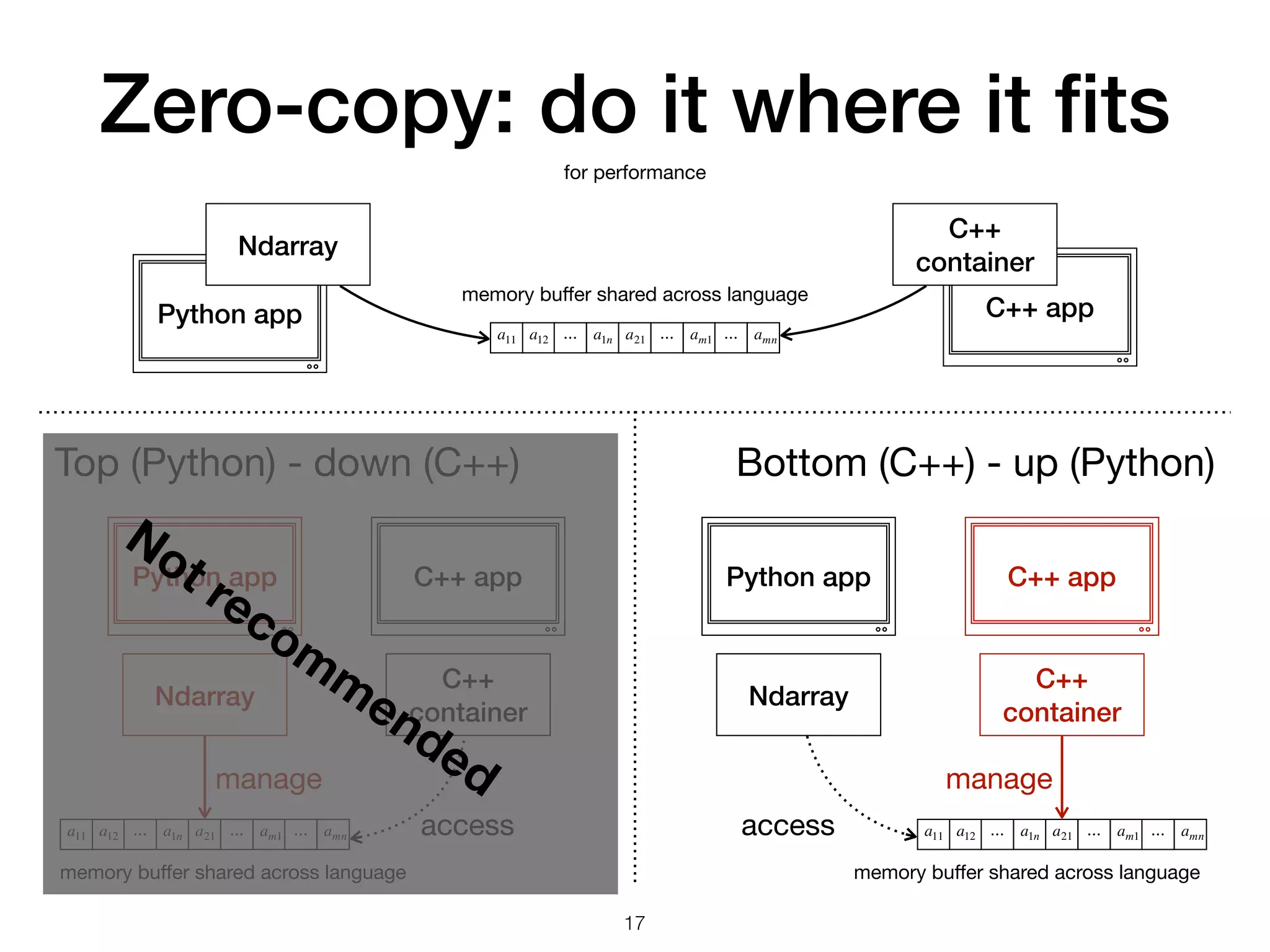
 { namespace py = pybind11; return py::buffer_info ( self.data() /* Pointer to buffer */ , sizeof(int8_t) /* Size of one scalar */ , py::format_descriptor<char>::format() /* Python struct-style format descriptor */ , 1 /* Number of dimensions */ , { self.size() } /* Buffer dimensions */ , { 1 } /* Strides (in bytes) for each index */ ); } ) cls .def_property_readonly ( "ndarray" , [](wrapped_type & self) { namespace py = pybind11; return py::array ( py::detail::npy_format_descriptor<int8_t>::dtype() /* Numpy dtype */ , { self.size() } /* Buffer dimensions */ , { 1 } /* Strides (in bytes) for each index */ , self.data() /* Pointer to buffer */ , py::cast(self.shared_from_this()) /* Owning Python object */ ); } ) .def_property_readonly(“ndarray2”, /* ... */) Return a distinct numpy ndarray: • The C++ class can return multiple buffers Python buffer protocol: • The C++ class itself is turned into an array description](https://image.slidesharecdn.com/notesaboutmovingfrompythontocpycontw2020-200906022140/75/Notes-about-moving-from-python-to-c-py-contw-2020-18-2048.jpg)
![Check assembly • Make sure compilers generate good code for performance hotspot • Checking instead of writing: we don’t have time to use assembly for everything • If compilers don’t do a good job, before jumping into hand-written assembly, consider to use intrinsics: https://software.intel.com/ sites/landingpage/IntrinsicsGuide/ 19 vmovupd ymm0, ymmword [rsi + r9*8] vmulpd ymm0, ymm0, ymm0 vmovupd ymm1, ymmword [rdx + r9*8] vmulpd ymm1, ymm1, ymm1 vaddpd ymm0, ymm0, ymm1 vsqrtpd ymm0, ymm0 void calc_distance( size_t const n , double const * x , double const * y , double * r) { for (size_t i = 0 ; i < n ; ++i) { r[i] = std::sqrt(x[i]*x[i] + y[i]*y[i]); } } movupd xmm0, xmmword [rsi + r8*8] mulpd xmm0, xmm0 movupd xmm1, xmmword [rdx + r8*8] mulpd xmm1, xmm1 addpd xmm1, xmm0 sqrtpd xmm0, xmm1 -O3 -mavx2 -O3 # Use redare2 to print the assembly. r2 -Aqc "e scr.color=0 ; s sym.calc_distance_unsignedlong_doubleconst__doubleconst__double ; pdf" _pybmod.cpython-37m-darwin.so AVX: 256-bit-wide vectorization SSE: 128-bit-wide vectorization](https://image.slidesharecdn.com/notesaboutmovingfrompythontocpycontw2020-200906022140/75/Notes-about-moving-from-python-to-c-py-contw-2020-19-2048.jpg)
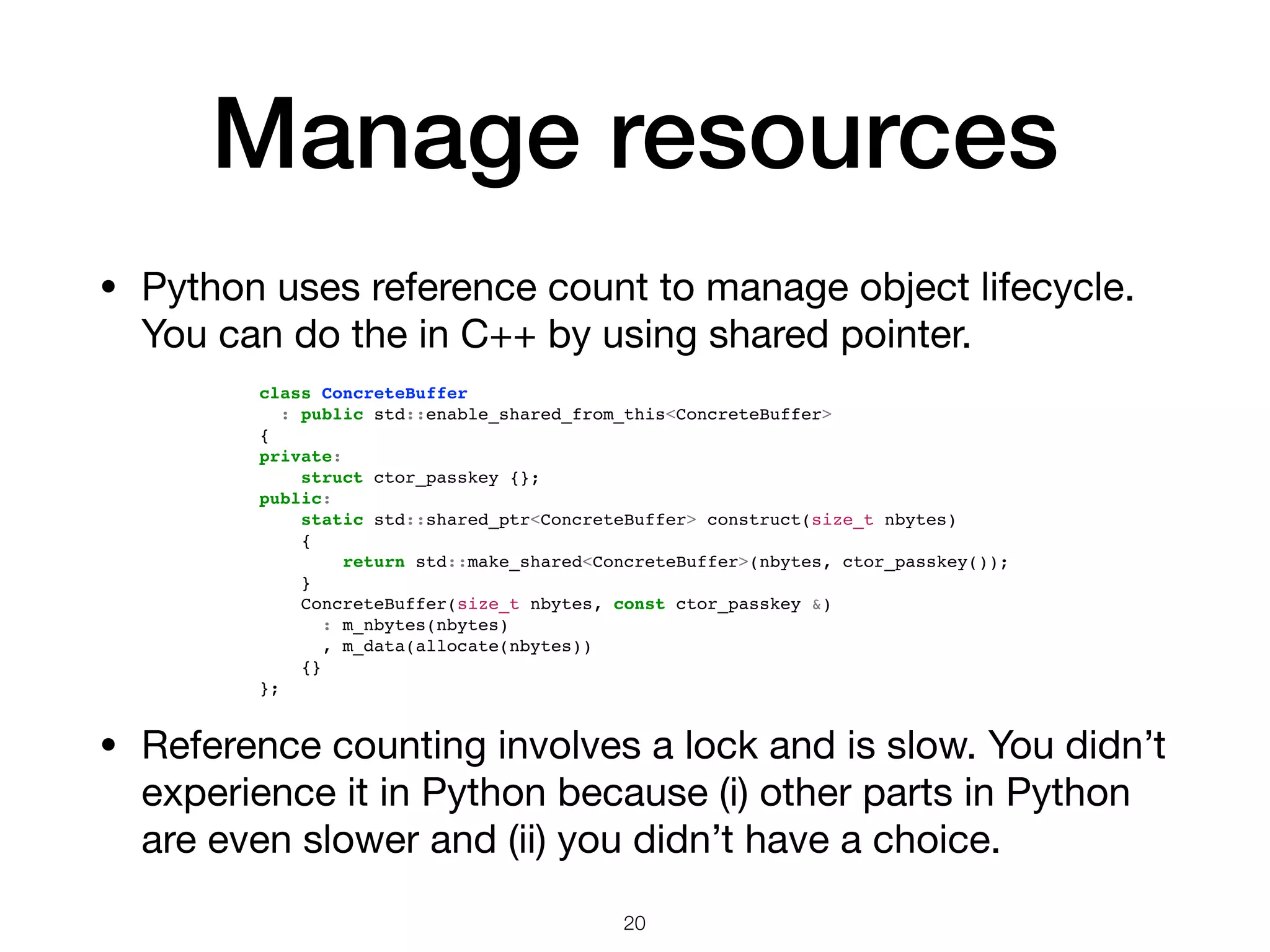
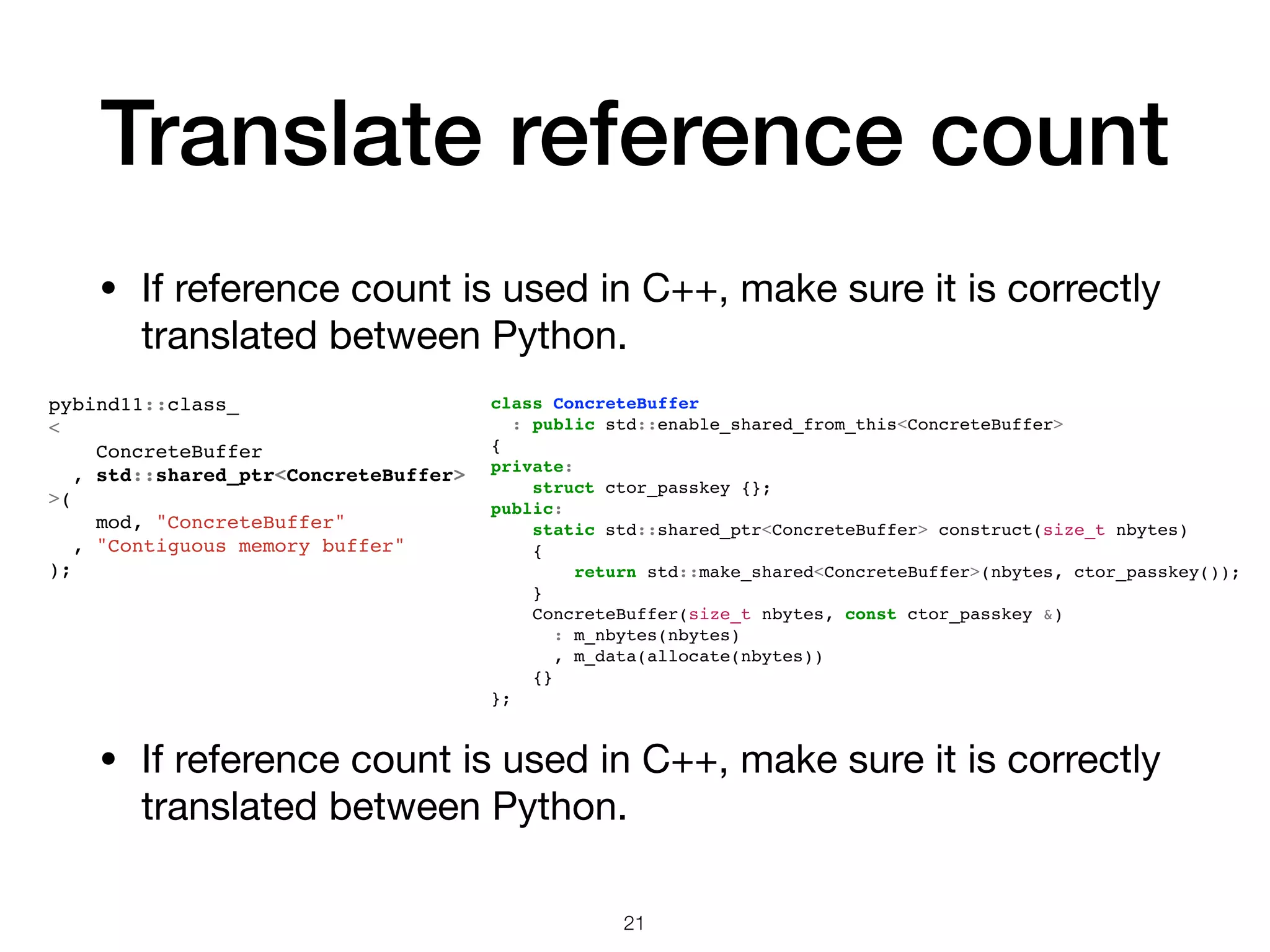
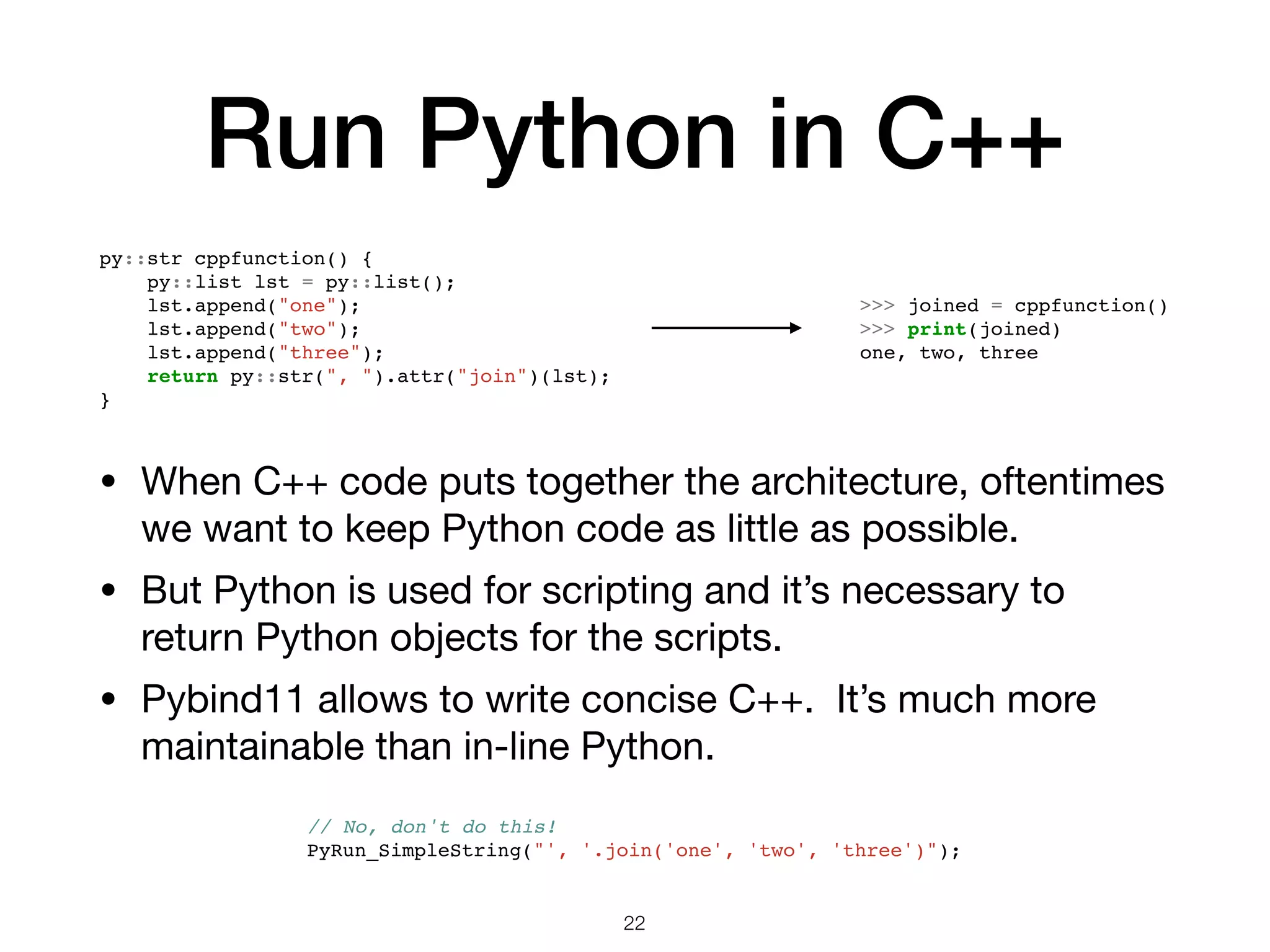
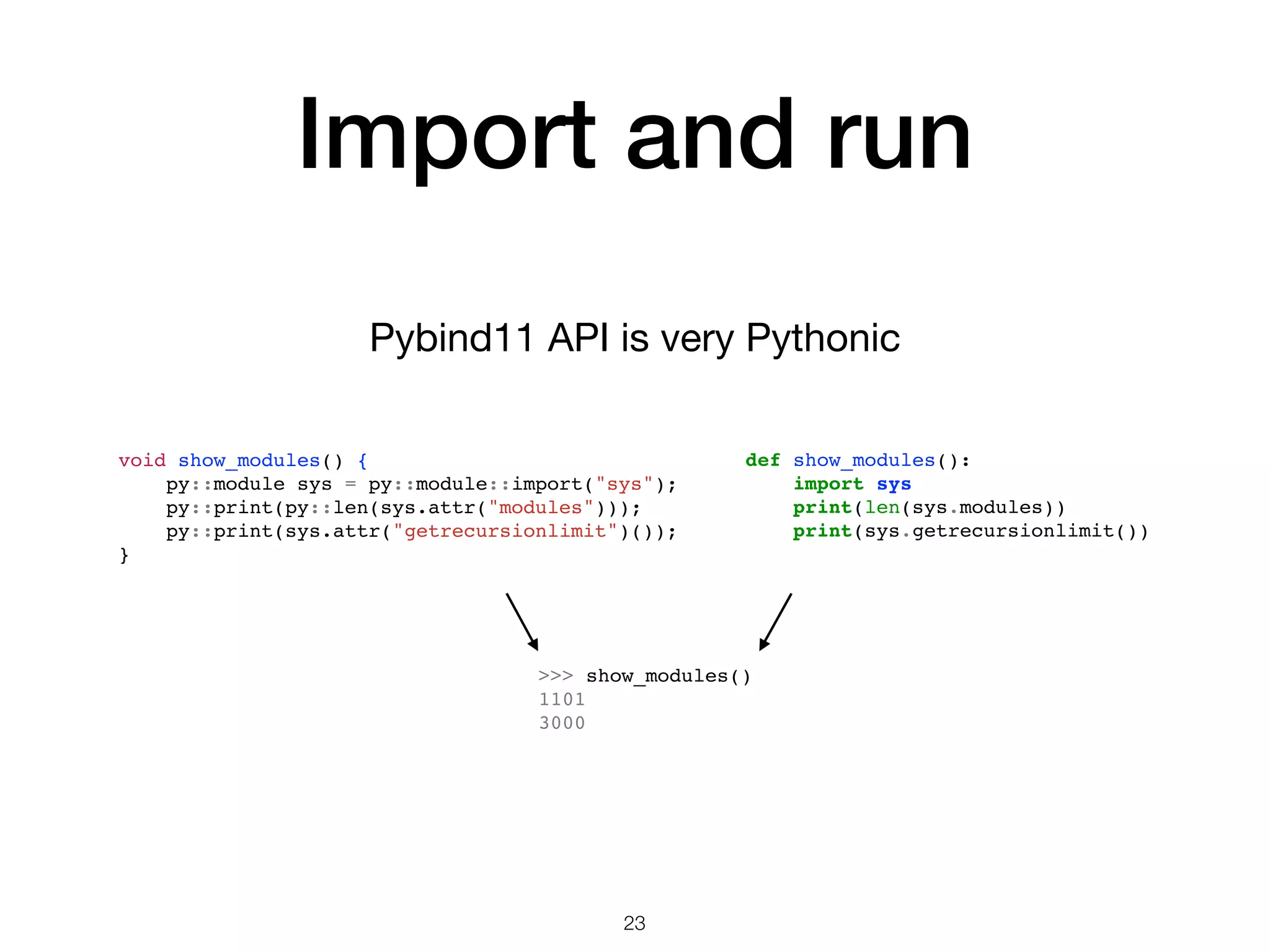
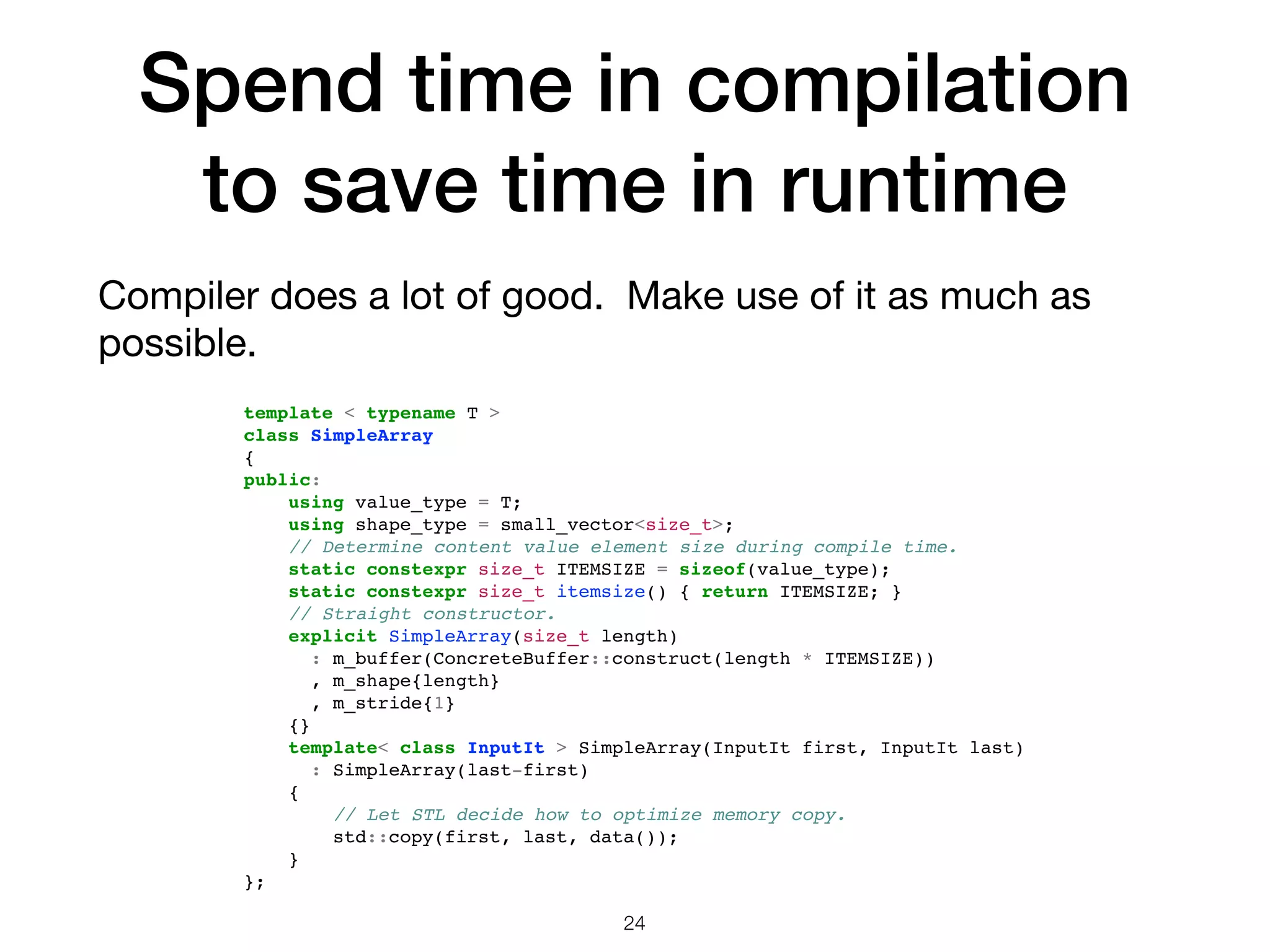
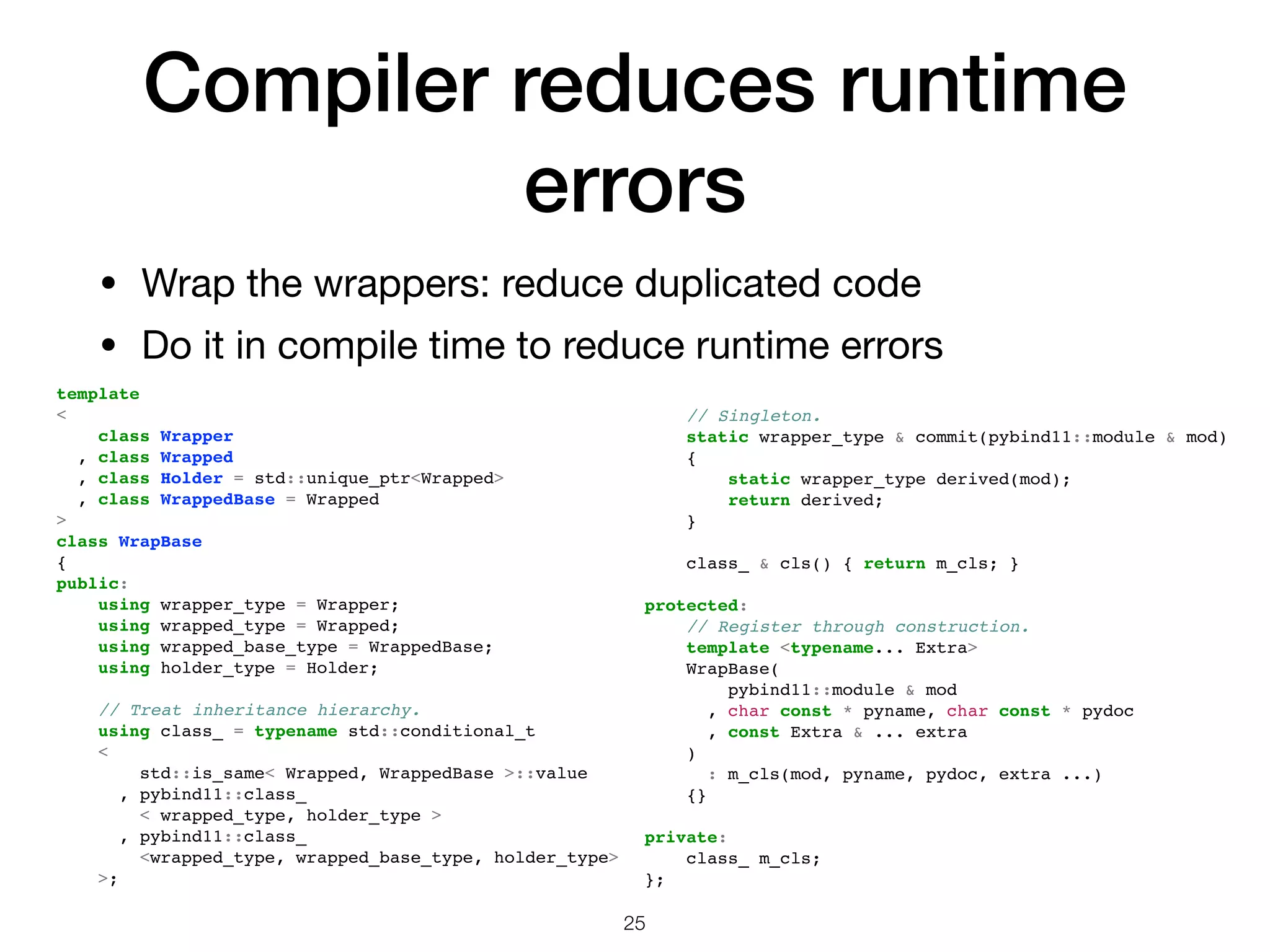
![Decouple resource management from algorithms 26 • Fixed-size contiguous data buffer template < typename T > class SimpleArray { public: using value_type = T; using shape_type = small_vector<size_t>; static constexpr size_t ITEMSIZE = sizeof(value_type); explicit SimpleArray(size_t length) : m_buffer(ConcreteBuffer::construct(length * ITEMSIZE)) , m_shape{length} , m_stride{1} {} private: std::shared_ptr<ConcreteBuffer> m_buffer; shape_type m_shape; shape_type m_stride; }; class ConcreteBuffer : public std::enable_shared_from_this<ConcreteBuffer> { private: struct ctor_passkey {}; public: static std::shared_ptr<ConcreteBuffer> construct(size_t nbytes) { return std::make_shared<ConcreteBuffer>(nbytes, ctor_passkey()); } ConcreteBuffer(size_t nbytes, const ctor_passkey &) : m_nbytes(nbytes), m_data(allocate(nbytes)) {} private: using unique_ptr_type = std::unique_ptr<int8_t, std::default_delete<int8_t[]>>; size_t m_nbytes; unique_ptr_type m_data; }; • Descriptive data object owning the data buffer](https://image.slidesharecdn.com/notesaboutmovingfrompythontocpycontw2020-200906022140/75/Notes-about-moving-from-python-to-c-py-contw-2020-26-2048.jpg)
